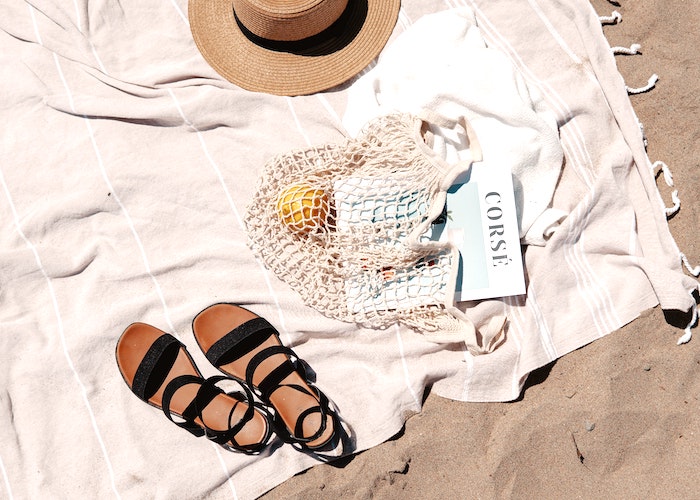I’ll be the first one to admit that I am not the best manager of money. Despite having a part-time job since the end of my junior year of high school, I was never really able to pad my savings account the way I know I should have. I would get to the end of a summer — which was, in theory, my time to put in more hours at work to save up — and realize that my accounts hadn’t grown much. Where did my money go? What did I even spend it on? For a long time, these thoughts were just annoying little voices in my head that I would push away whenever I swiped my debit card. However, during my freshman year of college, when I decided to take a spring break trip to London through my school’s exchange program, I knew that I had to save money fast if I wanted to come back to the States with more than $3 in my bank account.
After putting a couple of my smaller scholarships towards the trip’s expenses, I had about $1000 left for my personal budget. This did not include meals, spending money, or the goal I had set for myself of having at least $500 left in my savings account at the end of the trip. I made a point of overestimating my while-in-London expenses and decided to allot $500 total for spending money during the eight-day trip. This meant that, given the ~$600 balance of my savings account, I had to save about $1400 in five months. Considering that at the time I only had an on-campus job (which paid about $130 every two weeks) and an at-home, winter break job (which raked in roughly $250 every two weeks), my savings goal was going to be difficult to achieve. Despite my previous lack of success with saving money, I wasn’t terribly worried. After all, I had a plan: each time I got my paycheck, I would calculate what 90% of it was and immediately transfer that money to my savings account. This meant that I was left with a little bit over $10 of spending money every two weeks.
If this sounds a little overly-ambitious, it’s because it was. And I’d like to preface what I say next by acknowledging that for most people with my income level, it probably wouldn’t be possible. I was living in a dorm, and thus didn’t have to pay rent. The only bill I was personally responsible for was my cell phone, about $60 per month. If you don’t want to take savings tips from someone who doesn’t have a long list of mandatory expenses to attend to, I understand that. All this being said, the reason I feel qualified to write this article is because for the five-month period that I was saving, I never spent over the 10% cut of my bi-monthly paycheck that I had allocated to my checking account. I can confidently say that the only money I withdrew from my savings account was for Christmas presents, and if memory serves, I only withdrew about $50 (in addition to the 10% of my paycheck) to help me buy gifts for ten-ish people. That one deviation from my savings regiment aside, here’s what I did to save $1400 in five months.
1. Transfer money to your savings account immediately.
If you can set it up so that your checks automatically put a percentage of your income into savings, all the better. If you don’t have this set up, move that money as soon as you wake up on pay day. It’s too easy to justify spending money that’s easily accessible.
2. Leave your debit card at home.
Obviously this isn’t always safe –- if you’re in a situation where you might need to call a cab to get home, or you are someone who needs to be able to quickly buy food for medical reasons, by all means, bring your card. But for me, I knew that carrying my card around campus with me would justify that mid-study-session coffee break. In general, your card is best left at home, out of sight.
3. Unsubscribe from all promotional emails.
At the time, clothes were by far my biggest source of impulse spending. I knew that I was highly susceptible to any email with “free shipping” in the subject line. If you ruthlessly unsubscribe from these email threads whenever they show up in your inbox, I can guarantee that you’ll enjoy both your de-cluttered inbox, the savings you score from a lack of spur-of-the-moment purchases, and the increased closet space!
4. Embrace the library.
Or YouTube, or a free Spotify or Pandora account, or anything that keeps you from spending money on your favorite ways of consuming media. Personally, my vice is books, and because I love being surrounded by my comforting, paperback friends, I can easily drop $50 at a time on Amazon. It turns out that books still contain the same words if you borrow them from a library instead of buying them! And, as a bonus, if you wind up not loving the book, you can rest easy knowing that you didn’t waste a cent. If any subscription services (like Netflix or Hulu) are an absolute must for you, see if you can get a friend to share an account with you for a while to cut down on the per-person cost.
5. When you feel like indulging yourself, embrace the magical world of free trials.
I’m not going to lie: after a few months, having two lattes wipe out your checking account is going to get old. When I started to crave something new, but I still didn’t want to sacrifice my growing London stockpile, I made a list of things I could get for free and started cashing in on them. Lots of subscription boxes offer free samples (my favorites are Naturebox and Graze), and Hulu or Netflix’s free trial period gives you plenty of time to squeeze in some binge-watching. Just remember to cancel your subscription before your card gets charged (seriously, write it down on your calendar).
6. Watch your savings grow, and be proud of it.
While I was saving money, I made a Word doc where I logged my income and included a corresponding column that tracked the amount of money I still needed to save steadily. I watched that column steadily decrease. Although my savings plan was extreme, it was encouraging to see how much I could stow away in such a short amount of time and to know that I could do it again in the future if need be.
Although after my London trip I did become much more lax about my savings goals, this period of extreme saving gave me an idea of how capable I am of saving effectively and rapidly. The whole experience made me think much harder about what I spend my money on. I still fall back on these strategies when I want to do a no-spend month, or when I know I have a big expense coming up. The best part: these methods continue to work for me! And in case you were wondering — yes, being able to enjoy London while checking out the city instead of obsessing over my checking account balance was completely worth the penny-pinching.
Sara Hilliger is a 20-year-old college student from Wisconsin, just trying to figure out exactly how this whole money thing works.
Image via Unsplash





